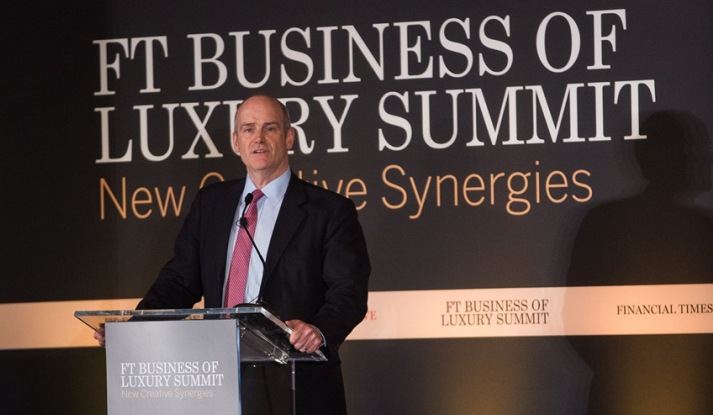
Luxury brands, beset by challenges from sluggish consumer spending to the rise of online shopping, should look to China as for fresh strategies and solutions, the president of one of the world’s largest e-commerce companies said today.
“One only has to look at China today to glimpse the future,” said Alibaba Group President Michael Evans during a keynote speech at the Financial Times Business of Luxury Summit in San Francisco. “The country is leapfrogging brick-and-mortar retail. Shopping is not only happening online, it’s happening principally on mobile.
“The brands that embrace the opportunities of the digital economy will be the winners,” Evans said.
It might seem counterintuitive for luxury retailers to double down on China, where slowing economic growth and a government anti-corruption crackdown has taken a toll on sales of high-end products. The mainland’s overall luxury market dipped 2 percent to RMB 113 billion ($17.2 billion) last year, driven by a decline in watches, men’s wear and leather goods, according to global management consultancy Bain & Co.
But the China market, representing one-third of the total global luxury market, is “too big to ignore,” Evan said. Besides, as offline luxury sales have stagnated in recent years, there’s little evidence of malaise in online sales, which grew more than 50 percent globally last year.
According to a report by KPMG, 45 percent of China’s online luxury shoppers now buy most of their high-end goods online. Half of China’s domestic luxury consumption will be generated online by 2020, KPMG predicts.
“The Chinese conception of luxury is Western luxury,” Evans said in a Q&A session following his speech. “The products they want to buy are big brand-name products, almost of which come from Western countries. Their focus today are the brands that they can see on the Internet.”
Luxury retailers can adapt to this changing landscape by integrating their offline and online sales channels and figuring how to best connect with consumers through digital technology, Evans said, noting that “brands have been cautious to embrace the benefits of the convergence of online and offline.”
“Today’s global consumers are making full use of social media, mobile search and payment apps for most of what they buy, both offline and online,” Evans said, adding that this applies not just to China but also to consumers in Southeast Asia and India. No longer content to shop exclusively in physical stores, consumers want a seamless, digital-enabled, multi-channel experience which requires a different type of engagement by brands, he said.
Evans pitched Alibaba’s giant online shopping marketplaces as a direct route to the Chinese consumer and a key source of data on consumer behavior that can inform brand strategies and help them connect with more customers.
Tmall.com, Alibaba’s B2C shopping website, hosts the virtual storefronts of scores of international brands including Apple, Burberry, and Estee Lauder, offering retailers control over pricing, branding and merchandising; delivery and returns; and data that supports all critical decision-making. “Brands maintain control over the entire consumer experience,” Evans said.
Another important challenge faced by luxury retailers is controlling their intellectual property, he added. Armed with technology and with the support of brands, Alibaba—which often is accused of not doing enough to keep counterfeiters from using its marketplaces to sell counterfeit products—is committed to “becoming the global leader in anti-counterfeiting,” Evans said.
“This is an exciting time for luxury brands,” he added, “but it is challenging as they think about how to integrate their offline and online strategies.”




